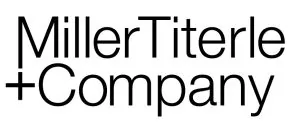- What is a Plan of Arrangement?
An arrangement is a transaction that may be effected by a Canadian corporation under the corporation’s governing corporate legislation. Arrangement transactions are typically detailed in a “plan of arrangement” (see below). References in this Practice Guide to “plan of arrangement” refer to an arrangement transaction effected pursuant to a statutory arrangement. An extremely broad variety of transactions can be effected pursuant to a plan of arrangement, including transfers of shares or assets, exchanges of securities, compromises with shareholders or creditors, reorganizations of share capital or other fundamental changes such as an amalgamation.
In a merger and acquisition context, plans of arrangement are frequently utilized in friendly, non-hostile acquisitions by an Acquiror of all of the outstanding shares of a company, including “going private” transactions where the shares of a public company are acquired. They are also used in acquisitions of shares of non public companies, particularly if the shares are widely held.
- Advantages of a Plan of Arrangement
Single Step Acquisition Without Requiring Every Shareholder to be Party. In a merger and acquisition context, plans of arrangement can permit a Purchaser to acquire 100% of the shares of a Target Company without having to enter into a Share Purchase Agreement with every shareholder or make an offer which is accepted by each shareholder. Instead, an Acquiror enters into an “Arrangement Agreement” with the Target Company proposing a plan of arrangement. The plan of arrangement must be approved by a special resolution of the shareholders of the Target Company (usually two-thirds of the votes of shares entitled to vote cast), either at a shareholders’ meeting, or pursuant to resolutions consented to in writing by all shareholders. If the plan of arrangement receives such approval, and is approved by the court (see below), it is binding on all shareholders of the Target Company, including holders that may not have voted in favour, or voted against.
By way of contrast, if, for example, a Purchaser wishes to acquire all the shares of a Target Company with 20 or more shareholders, the Purchaser would need to enter into a Share Purchase Agreement with all 20 shareholders or make an offer to acquire shares from every shareholder, which offer is (i) accepted by holders of at least 90% of the outstanding shares (not including any shares held by the Acquiror) and then rely on statutory compulsory acquisition provisions to subsequently acquire the remaining minority shares, or (ii) accepted by holders of at least two thirds of the outstanding shares, and then subsequently complete a “second step” transaction, such as an amalgamation or plan of arrangement, often requiring holding of a shareholders’ meeting, following the initial acquisition, to acquire the remaining shares.
Flexibility. In addition, a plan of arrangement permits great flexibility in structuring the transaction, including accommodating multi-step transactions involving more than just an acquisition of shares (e.g., dispositions or acquisitions of assets, reorganization of capital structure, or amalgamations or other fundamental changes), and permitting acquisition or cash-out of options or other rights to acquire shares of the target company, in a single process, and specification of a defined sequencing for completion of the various steps (often useful for tax planning purposes).
Help Facilitate Holdback and Amendments if Necessary. Another advantage of a plan of arrangement transaction is that it can facilitate having all Target Company shareholders bound by holdback provisions if the Purchaser insists on a portion of the purchase price being held back for a period of time pending determination of the veracity of the Target Company’s representations and warranties, without all shareholders having to execute a contractual agreement, as well as facilitating potential future changes to some terms without approval from each shareholder that is party to an acquisition agreement.
Dissent Rights. A potential disadvantage of a plan of arrangement is that it typically entitles any shareholder that may “dissent” in respect of the transaction to require that their shares be acquired by the Target Company (or the Purchaser) for their fair value. As a practical matter such a dissent remedy is not typically problematic.
Information Circular for Shareholder Meeting. An arrangement transaction may require that an information circular be prepared and mailed to the Target Company shareholders in respect of the meeting to be held to approve the plan of arrangement, unless the plan of arrangement can be approved by resolution consented to in writing by all shareholders. Preparation of an information circular is more complicated in situations where the consideration to be received by shareholders under the plan of arrangement includes shares of the acquirer, as, in that case, the circular will need to provide holders with information regarding the Acquiror and its securities.
Court Approval Costs. Another disadvantage is that a plan of arrangement transaction requires one or often two court orders, with the consequent legal fees relating to applications to obtain such orders.
- Documenting a Plan of Arrangement Transaction
The terms of an arrangement transaction are typically negotiated between the Acquiror and management of the Target Company and set out in an “Arrangement Agreement.” Such an agreement sets out the price to be paid for the shares to be acquired, conditions precedent to closing of the transaction and representations and warranties of the Target Company, much like a Share Purchase Agreement for an acquisition of shares in a private company. If the consideration for an acquisition of shares of a Target Company includes shares of the Acquiror, the agreement typically includes representations and warranties of the Acquiror, similar to those found in a share purchase agreement.[1] Similar to Share Purchase Agreements, Arrangement Agreements often include exclusivity (often referred to as “no shop”) provisions. [2]
Arrangement Agreements typically contemplate that the specific steps and details of the “arrangement” are set out in a “plan of arrangement,” usually attached as a schedule to the agreement.
In addition to an Arrangement Agreement and the related plan of arrangement, Acquirors often seek to have “lock-up” or “support” agreements entered into by the majority shareholders and directors of the Target Company under which such holders agree that they will vote in favour of the arrangement. However, such agreements are usually only required from a relatively small number of holders (e.g., a maximum of 10 to 15).
- Court Approval of Plan of Arrangement
Plans of arrangements must be approved by the court in a “final order” after considering the fairness of the arrangement to the affected shareholders. Most plan of arrangement transactions also involve the Target Company applying for an “interim order” that provides for a meeting of its shareholders to approve the plan of arrangement. While there is no assurance that the court will approve a plan of arrangement, it is uncommon for a plan of arrangement not to be approved by the court where the plan of arrangement has been approved by a substantial majority of affected shareholders. Although shareholders that wish to oppose a plan of arrangement are entitled to attend the court hearing and argue it is unfair, typically court applications are not opposed.
Although the requirement for court approval creates a risk that the approval will not be obtained, where approval is obtained, the existence of such court approval can provide comfort and protection to the Target Company directors against claims from minority shareholders that may have opposed the transaction.
- Securities Law Considerations
Where securities of an Acquiror are to be issued as consideration for an acquisition under a plan of arrangement, there is an exemption under Canadian securities laws permitting issuance of shares pursuant to a statutory transaction that can be relied on by the acquiror. In addition, if the Target Company has any U.S. shareholders, the Acquiror can often rely upon the Section 3(a)(10) exemption under U.S. securities laws for issuances of securities where the issuance has been approved by the court.
Conclusion
While plans of arrangement are a very common technique for transactions involving both public and private Target Companies, and many features of the applicable documents are not dissimilar to provisions in Share Purchase Agreements negotiated in private M+A transactions, they involve terms and elements that call for different experience and legal knowledge. That should not discourage entrepreneurs seeking to sell their business from considering going down what to them may be a less familiar path and taking advantage of the benefits of this structure.
[1] However, because the agreement is typically only between the Acquiror and the Target Company, and not the shareholders of the Target Company, Arrangement Agreements differ from Share Purchase Agreements in that they often include only representations and warranties of the Target Company regarding its status and financial position, and other similar matters, and not representations and warranties from the Target Company shareholders. In addition, they include provisions dealing with the Target Company convening and holding a meeting of security holders required to approve the arrangement, and application by the Target Company for court approval of the arrangement.
[2] In addition, it is common in arrangement transactions, particularly where the Target Company is a public company, for the agreement to provide for payment of a “break fee” to the acquirer if the transaction is not completed for various reasons (e.g., if a competing transaction may instead be completed with another acquiror).







